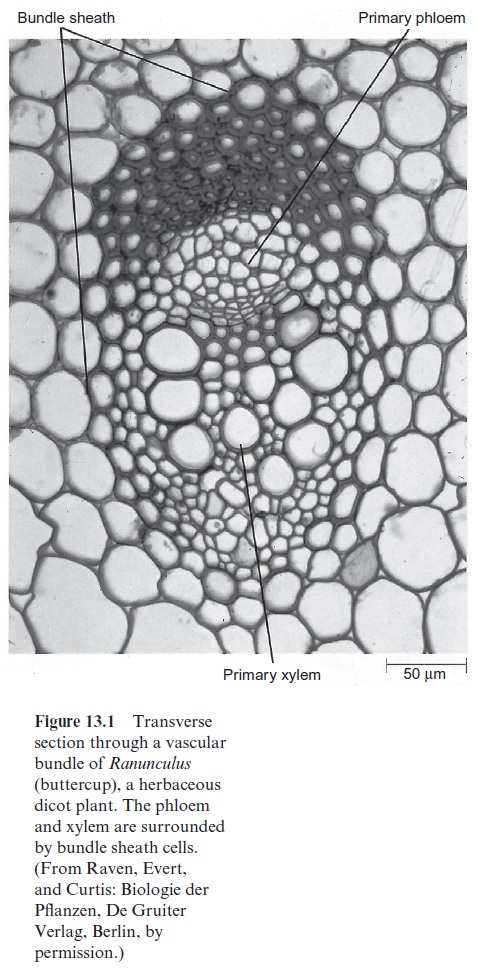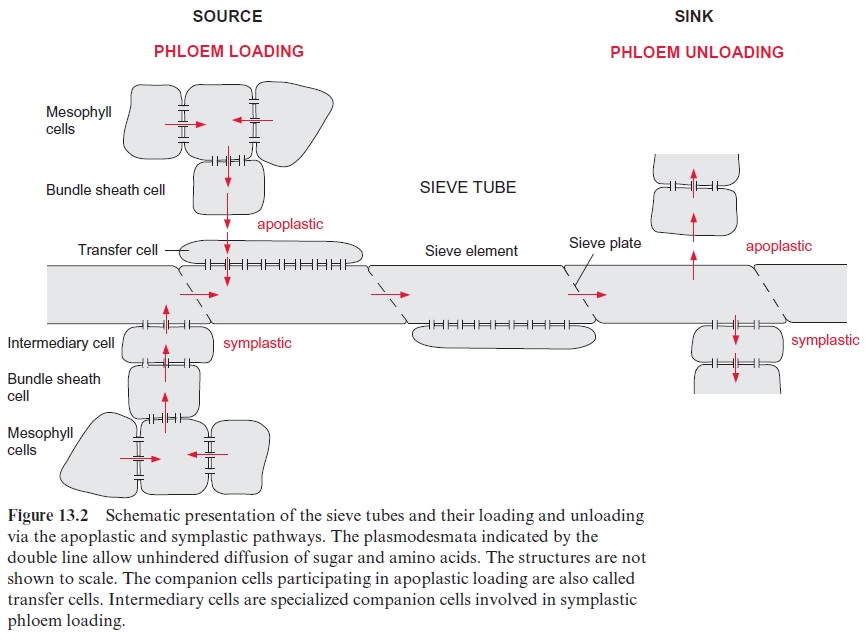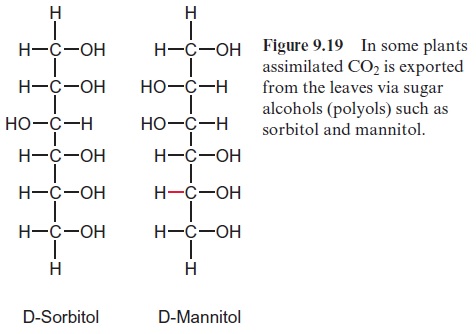Chapter: Plant Biochemistry: Phloem transport distributes photoassimilates to the various sites of consumption and storage
Phloem transport distributes photoassimilates to the various sites of consumption and storage
Phloem transport distributes photoassimilates to the various sites of consumption and storage
Besides having the xylem as a long-distance translocation system for transport from the root to the leaves, plants have a second long-distance transport system, the phloem, which exports the photoassimilates formed in the leaves to wherever they are required. Thexylem and phloem together with the parenchyma cells form vascular bundles (Fig. 13.1). The xylem (xylon, Greek for wood) consists of lignified tubes, which translocate water and dissolved mineral nutrients from the root to the leaves. Several translocation vessels arranged mostly on the outside of the vascular bundles comprise the phloem (phloios, Greek for bark), which transports photoassimilates from the site of synthesis (source) (e.g., the mesophyll cell of a leaf) to the sites of consumption or storage (sink) (e.g., roots, tubers, fruits, or areas of growth). The phloem system thus connects the sink and source tissues.

The phloem is built from elongated cells, joined by sieve plates, the lat-ter consisting of diagonal cell walls perforated by pores. The single cells are called sieve elements and their longitudinal arrangement is called the sieve tube (Fig. 13.2). The pores of the sieve plate are widened plasmodesmata lined with callose . The sieve elements can be regarded as living cells that have lost their nucleus, Golgi apparatus, and vacuoles, and contain only a few mitochondria, plastids, and some endoplasmic reticulum. The absence of many cellular structures specializes the sieve tubes for the long-distance transport of carbon- and nitrogen-containing metabolites and of various inorganic and organic compounds. In most plants sucrose is the main transport form for carbon, but some plants also transport oligosaccharides from the raffinose family, or sugar alcohols (polyols), such as sorbitol and mannitol (Fig. 9.19). Nitrogen is transported in the sieve tubes almost exclu-sively in the organic form as amino acids. Organic acids, nucleotides, pro-teins, signal molecules and phytohormones are also present in the phloem sap, but in much lower concentrations. In addition to these organic com-pounds the sieve tubes transport inorganic ions, mainly K+ ions.

Companion cells are localized adjacent to the sieve elements of angiosperms. These cells contain all the constituents of a normal liv-ing plant cell, including the nucleus, many mitochondria and ribosomes. Companion cells supply the adjacent sieve elements with energy and syn-thesized proteins. Sieve elements and companion cells have developed from a common precursor cell. They are connected to each other by numer-ous plasmodesmata and are important for phloem loading.
Depending on the kind of phloem loading, the companion cells are named transfer cells or intermediary cells.

Related Topics